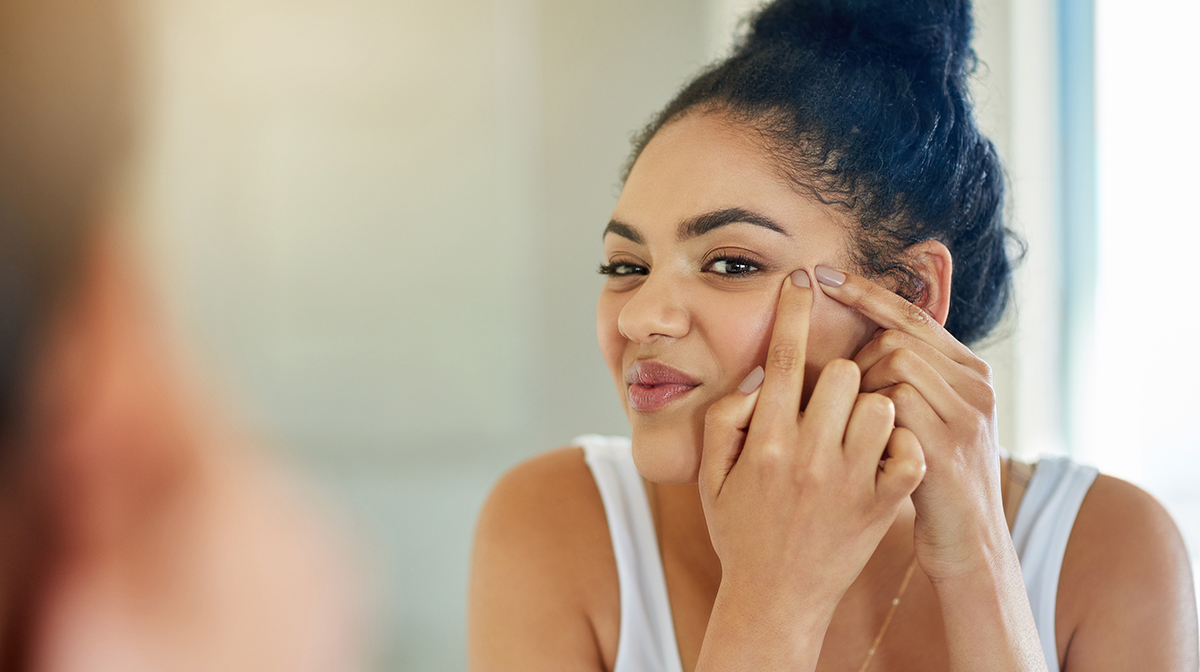
Acne looks different for everyone, and there is no one way to treat it. However, if you are struggling to identifywhat type of acne your skin is experiencing and how to look after it, read throughSkinStore’s in-depth guide to learn more.
What is Acne?
Acne is a common skin condition that can be caused by many different factors. The condition can start at any age, butis commonly found amongst teenagers and young adults. As the skin’s folliclesbecome congested with things such as oil, dead skin cells and hair, blemishes may begin to form.
What Are The Different Types Of Acne?
Blackheads
Appearing as black spots in the skin, blackheads are the result of clogged pores, turning dark in color as they are exposed to the air. They are often found on and around the nose. It is not recommended to use pore strips or squeeze blackheads as this may lead to scarring. However, you can help to keep your pores clear by exfoliating and cleansing the skin. The SkinCeuticals MicroExfoliating Cleanser decongests the skin and smooths textural irregularities.
Whiteheads
Whiteheads are one of the most typical forms of acne. As the pore becomes clogged, the skin forms a layer over the pore and traps pus within, giving it its color. Again, it is important not to squeeze the blemish. Using products such as the COSRX AHA 7 Whitehead Power Liquid helps to diminish their appearance and remove pore-clogging impurities.
Papules
Papules appear as red, swollen bumps without a head. This type of acne occurs when a clogged pore comes into contact with Cutibacterium acnes (C. acnes) bacteria on your skin. Ingredients such as benzoyl peroxide are believed to be beneficial when treating papules, and incorporating products designed to target inflammation may help to visibly balance the skin tone.
Pustules
Pustules are surrounded with redness, much like papules, but they also have a white or yellowish cap. They can form anywhere on the body, but are most commonly found on the face, back and chest. Resist the urge to pop and use products such as the Revolution Skincare Pick-Me-Not Blemish Patches to help soothe the skin, decongest the pores and minimize the appearance of blemishes.
Cysts
This severe type of acne can be tender and painful, resembling large red blemishes beneath the skin. Caused by infection, cystic acne carries a risk of leaving permanent scars. A dermatologist can help to treat cysts and prescribe medications.
Nodules
Often confused with cysts, nodules lay deep beneath the skin and can appear red or skin-toned. Cysts are formed when the pores become clogged with C. acnes bacteria, dead skin cells and sebum, and can feel firm and sore. To help keep the pores clear, use ingredients featuring salicylic acid.
Acne Causes & Prevention
As mentioned previously, acne can be triggered by many different factors, such as hormones, family genetics, your diet or even certain medications and cosmetic products.
Pharmacists and dermatologists can provide professional product recommendations and carry out certain treatments that suit your skin’s needs. In your everyday routine, helping to keep your skin hydrated and clean (but remember not to over-wash) helps to remove breakout-causing bacteria. Additionally, look out for non-comedogenic makeup and skincare products to keep your pores unblocked.As tempting as it may be, try to resist touching your face and picking any blemishes.
Overview
Knowing your skin type and its unique needs will help to identify the right treatments for you. In the US, over 50 million Americans are affected by acne annually, so you are not alone.Shop SkinStore’s collection of products for acne and blemishes here. Shop the products mentioned in this blog below:






